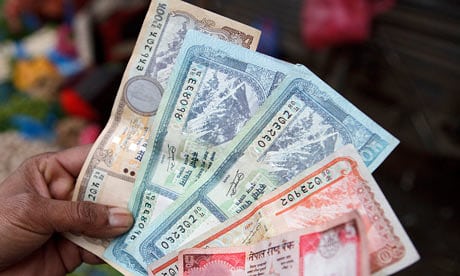Financial inclusion plays an important role in determining the socio-political and economic fabric of a country. In Nepal, access to finance is a need of every household and businesses. A government aiming for a balanced development of multi-sector should consider financial inclusion as an important element in its agenda. Nepal’s recent history and of other conflict-hit countries in the world evidently depicts that financial exclusion is one of the major reason causing civil unrest and other crises fostering violence. The trajectory of financial exclusion eventually affects the economy by creating a vicious trap of underdevelopment. Nepal entering into a new federal system of governance, financial inclusion and effective policy facilitating it have become an urgent need.
Financial inclusion has been an important policy objective internationally, various mechanisms have been created to coordinate interstate involvement in execution and planning of policies. United Nations created the Advisory Group on Inclusive Financial Sector to advise on global issues related to inclusive finance. The G20 leaders also recognized the importance of financial stability, financial inclusion, and consumer protection amidst the 2008 financial crisis. Thus creating peer-learning groups to support national financial inclusion strategies across the globe, in a similar gesture, World Bank also has devised knowledge products on coordination structures of financial inclusion strategies. These useful international mechanisms among others have helped developing and underdeveloped countries in framing its national financial inclusion policies marking its importance for sustainable growth.
Philippines and Zambia’s steps for financial inclusion
In pursuit of a balanced economic development, Philippines a rapidly developing nation in Asia framed a National Financial Inclusion Strategy in 2015. The strategy focuses on four components, providing access to the financial product to people, to provide quality financial products, effective usage of financial products and creating welfare in the society through policy engagement. Along with such mission, the prerequisites for the policy for maximum impact have been identified. Firstly, it highlights the requirement of strong financial institutions for the delivery of financial products through innovative channels. Secondly, it emphasizes the use of technology to deliver products to the financially excluded population.
Importantly, the financial inclusion policy of Philippines is aligned with the national strategy of development, The Philippines Development Plan. The plan aims to achieve inclusive financial growth by making both government and private financial sector accountable for an overall inclusive growth of the economy.
Similarly, Zambia with per capita income slightly higher than of Nepal has progressively framed National Financial Inclusion Strategy 2017-2022 with the vision of providing universal financial access to its citizens at an affordable price. Zambia’s barrier for an inclusive financial system is similar to Nepal, which includes obstacles like lack of awareness of available financial products and services, low knowledge of basic financial concepts and concentration of financial products delivery channels in urban areas. Limited availability of finance and the high cost of credit are the major underlying problem for the small and micro enterprises and to the agriculture sector. Zambia’s strategy has identified enablers that would help in achieving the goal of the policy. First being public and private sector commitment and coordination, secondly creating a favorable legal environment, thirdly having the financial infrastructure. The drivers for financial inclusion identified are the accessible delivery channels, innovative and customer-centric products focus on SME and agriculture sector growth and financial consumer protection.
Financial inclusion in Nepal
Nepal’s financial inclusion status is in a delicate state. It is alarming that only 61 percent of the adult population is formally served, 21 percent use only informal financial services and 18 percent of the adult population is financially excluded. Nepal Rastra Bank has kept financial inclusion within its policy framework and has been highlighting it through various policy measures, for example, providing credit for investment in the productive sector, refinancing facilities to the cottage and small industries, directives on consumer protection, branchless banking, and mobile services.
However, despite policies and programs are formulated to enhance financial inclusion, it has not shown desired results that are measurable. With banks operating in urban and concentrated areas, the economic disparity seems to hike if no effective intervention is made to support financial inclusion in rural communities.
Formulation and implementation of National Financial Inclusion Strategy and its roadmap should be a high priority for the government to ensure sustainable growth. It is also important in order to achieve the dream of graduating to a middle-income country by 2022 and to end poverty by 2030. The strategy also is a medium to address the crippling problem of income inequality, poverty, financial distress and debt of the low-income group of the country.
With the decentralized system in place, delaying financial inclusion would have a snowball effect in the political economy of Nepal inviting slower economic growth and uncertainty.
An effective national financial inclusion strategy is more relevant than ever as the government faces challenges like tax revenue collection in different states, creating job opportunities, maintaining the balance of trade and increasing the living standard of people. A well-framed national financial inclusion strategy would directly aid in addressing these issues creating an environment for sustainable prosperity.
By Prakash Koirala
The writer is Managing Director of FINLIT Nepal.
(This article was originally published in Karobar National Economic Daily.


